Ten key points to help you fully understand the multi-parameter monitor
 Mar 15,2025
Mar 15,2025

 Uryn
Uryn
The multi-parameter monitor is an important instrument that continuously monitors the patient's physiological indicators (including heart rate, heart rhythm, blood pressure, respiration, and blood oxygen saturation). It can prompt changes in the patient's condition and is one of the most commonly used medical instruments with alarm functions in hospitals.
In clinical practice, because patients and their families are not clear about the monitor, some unreasonable behaviors will occur. These behaviors not only interfere with signal transmission and cause false alarms, but also may cause medical staff to miss important monitoring data, causing safety hazards. Therefore, you, me, and him need to manage the monitor together to reduce the false alarm rate and the incidence of clinical adverse events.

The first point
First of all, the physiological indicators monitored by the multi-parameter monitor can provide doctors with important reference for the diagnosis and treatment of diseases. For patients with unstable conditions, such as abnormal physiological indicators, special examinations, and after surgery, monitors are needed for monitoring. When the patient has abnormal conditions, medical staff can use the sound alarms and color changes issued on the central monitoring station or bedside display to make timely judgments on the condition and give the fastest treatment to save lives.
Second point
When the monitor is measuring blood pressure, you need to stop moving, preferably lying flat, with your arms straight, not raised or moved, so that your arms are at the same height as your heart. If you are sitting, the center of the cuff must be at the same height as your heart during measurement. Improper body position will lead to blood pressure measurement errors.

Third point
The clip for measuring blood oxygen saturation should be clamped on a warm finger with the wire facing up. You need to help the nurse trim your nails and remove oil stains, and change the finger clip every two hours to avoid pressure injuries.

Fourth point
We will adjust the alarm parameters of the monitor according to the individual differences of the patient. Exceeding the set range means that an abnormality may have occurred, and medical staff are required to evaluate and provide treatment based on. Therefore, the monitor cannot be turned off or the parameters changed without authorization, and the alarm cannot be turned off, so as not to delay the treatment of the disease.
Fifth point
If you need to get out of bed, go to the toilet, or go out for examination, please do not move, remove the electrodes, or disassemble the connecting wires of the monitor by yourself.
Sixth point
During the monitoring period, you should try to stay in bed and rest. If the condition allows, you can move appropriately, but do not get out of bed without authorization.
Point 7
Try to avoid using electronic products such as mobile phones near the monitor to avoid interfering with the monitoring waveform.
Point 8
Avoid placing other items on the monitor to avoid damaging the body and ensure electrical safety.
Point 9
If you feel itchy or painful skin or other discomfort during monitoring, inform the medical staff in time. We can improve the situation by changing the electrode patch or using anti-allergic electrode patches.
Point 10
The upper and lower values of the alarm parameters of the multi-parameter monitor have been set according to your condition. The alarm levels are high, medium, and low. If the alarm sound is relatively gentle, the alarm color is green or yellow, and the patient is conscious, there is no need to be overly nervous, just press the bell to call the medical staff. However, when the monitor emits a rapid "beep" alarm sound and a red prompt, it is a high-quality alarm. Please press the bell immediately and the medical staff will take emergency measures.

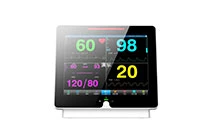

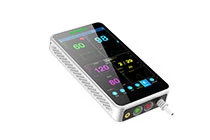
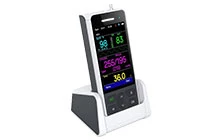
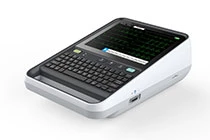
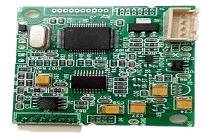




 Home
Home Knowledge About Using an Electrocardiograph
Knowledge About Using an Electrocardiograph  You May Also Like
You May Also Like

 Tel
Tel
 Email
Email
 Address
Address












